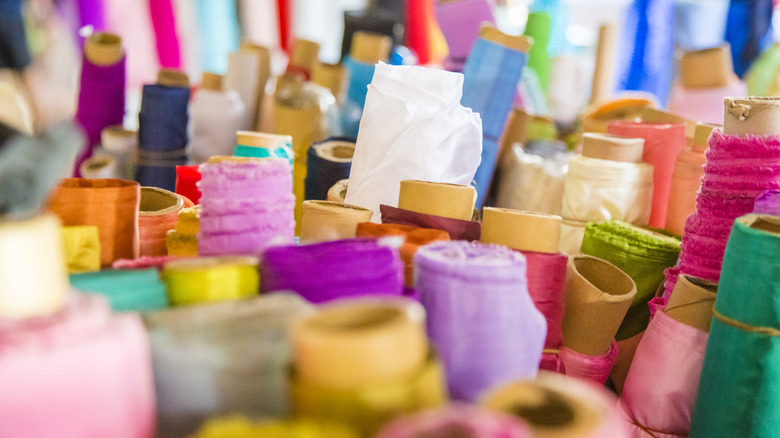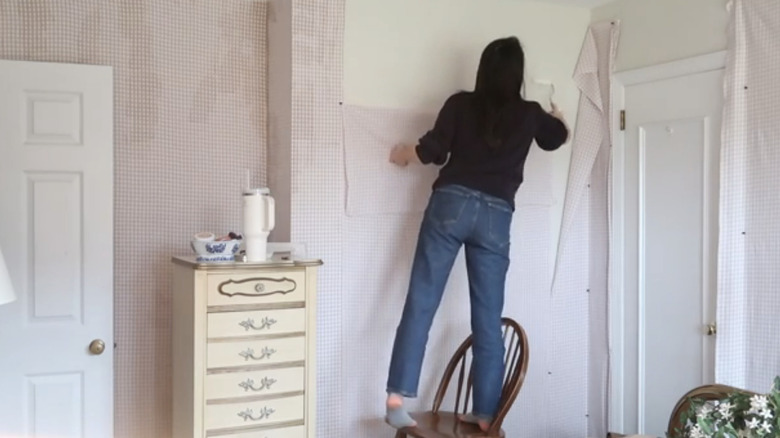This Simple Trick Turns Certain Fabrics Into The Wallpaper Of Your Dreams
Wallpaper is an excellent way to add character, color, and pattern to a room. However, finding the perfect wallpaper for your space with the perfect pattern and color palette — and inside your budget — usually proves to be extremely difficult. Furthermore, hanging wallpaper isn't an option for renters, and vinyl peel-and-stick wallpaper doesn't last as long as you think. Luckily, there's an easy and affordable solution — use fabric in place of wallpaper.
When applied with a heavy-duty liquid fabric starch or strippable wallpaper glue, fabrics adhere to a wall (or other surface) as a beautiful wall treatment. And with your choice of fabric, you can find the perfect color and pattern for any space in your home. Simply choose a bolt of fabric and cut it to the size of your space. Then, pin it to the top of the wall, and apply the starch from top to bottom, smoothing as you go along until your wall is finished. Use thumbtacks to hold the edges in place as it dries. Once the wall is totally dry, it will look just as good as traditional wallpaper for a fraction of the cost, and installation is a breeze!
If you want to replace the fabric and try another swatch or are moving out, removal is easy. If you used fabric starch, the fabric should peel away easily, and water can be added for stubborn spots. The best way to remove wallpaper glue is to saturate the wall with a solution of hot water, liquid dish soap, and a tablespoon of baking soda.
Other considerations for fabric wallpaper
Before you run to the fabric store and get started on your first fabric wallpaper project, there are a few things to keep in mind with this super-easy hack. For one, not all fabrics are well-suited to this. Heavy fabrics, like velvet, wool, and flannel, will be too heavy to stay up with starch or glue alone, as it will be difficult for the adhesive to penetrate through the fibers. Plus, adding glue to very textured fabrics, like corduroy, can look matted and sticky. Instead, opt for lightweight, thin fabrics for easy installation and a more paper-like finish.
One of the best things about this method is that it opens your options up to a ton of different patterns and colors you might not be able to find in regular wallpaper, but just like wallpaper, remember that fabric also uses repeating patterns. Be mindful of what prints and patterns you choose, and ensure that either they're easy to match up panel to panel or the pattern split isn't noticeable.
Although most tutorials insist that removing fabric wallpaper is easy and doesn't cause damage to paint, if you are worried, try a test area first. Cut a small square of fabric and attach it to a part of the wall that's not usually out in the open, like behind a bookshelf or coffee maker. Follow the application process as described, allow it to fully dry for a day, and then remove it. If there's no damage, you should be safe to go forward with your fabric wallpaper project.

